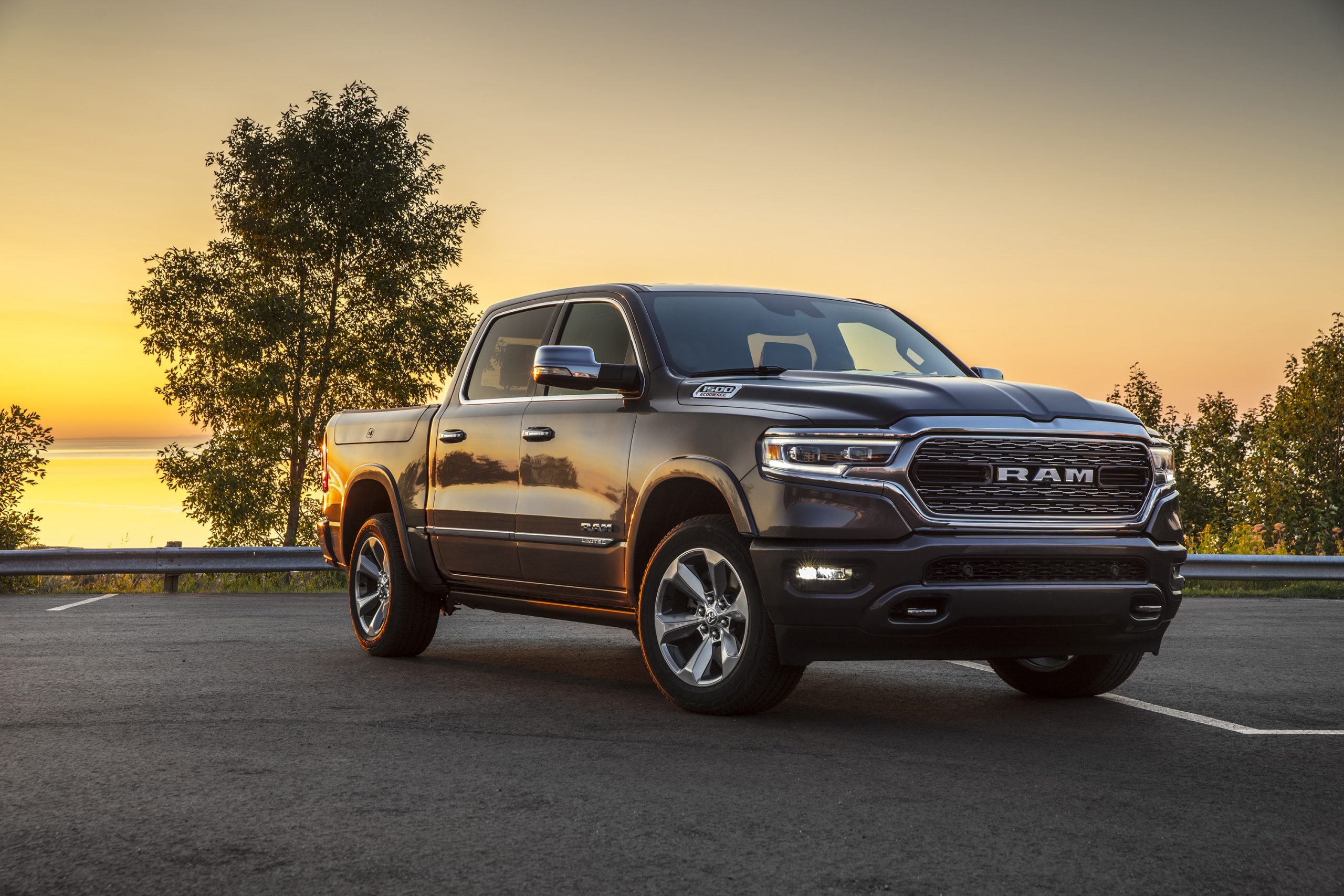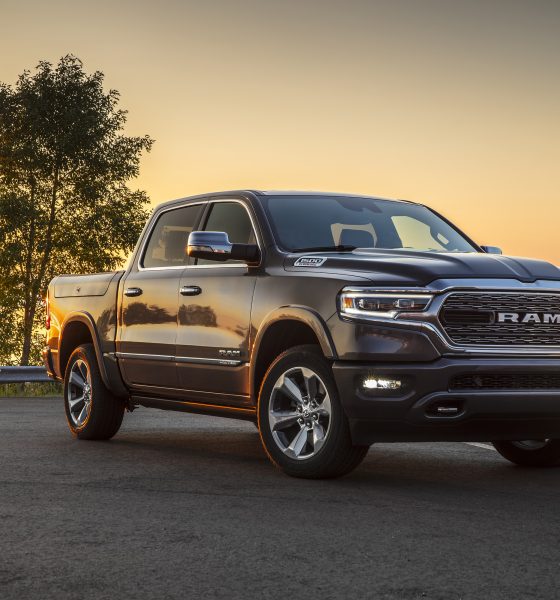

News
Stellantis CEO: EV transition costs are “beyond the limits” the auto industry can sustain
Stellantis CEO Carlos Taveres stated that the pressure for legacy automakers to accelerate the shift to electric vehicles could threaten jobs and vehicle quality as traditional carmakers struggle to manage the higher costs of producing EVs.
Taveres said that the costs of transitioning to electric vehicle production are “beyond the limits” of what the current auto industry can sustain in an interview with Reuters Next. He also highlighted the pressure legacy OEMs get from governments and investors to speed up the transition to electric vehicles.
“What has been decided is to impose on the automotive industry electrification that brings 50% additional costs against a conventional vehicle,” he said.” “There is no way we can transfer 50% of additional costs to the final consumer because most parts of the middle class will not be able to pay.”
He noted that traditional automakers would have to either charge higher prices and make fewer cars or accept lower profit margins to keep up with the additional costs of transitioning to electric vehicles. Taveres emphasized that both paths lead to cutbacks.
Many union leaders in Europe and North America agree that thousands of people could lose their jobs if the auto industry transitioned to EV production. US President Joe Biden is trying to tread the line between pushing legacy OEMS towards transitioning to EVs and providing job security in the auto industry.
Biden has openly supported the Detroit Big Three’s — Ford, General Motors, and Stellantis — EV goals, while puzzlingly ignoring Tesla’s role in the current electric vehicle revolution. The US President seems keen on only promoting automakers that are affiliated with unions in his bid to make the United States of America a powerhouse in the global electric vehicle market, all while ignoring the powerhouse that is Tesla, which already operates within the country.
In the summer, the Detroit Big Three announced their commitment to increase each of their electric vehicle sales by about 40% by 2030. Some may argue that the Detroit Big Three’s EV transition goals go against the current tides, considering that a few countries have already committed to banning fossil fuel cars by the end of this decade, while others are seriously considering the move.
In his recent interview, Tavares noted that automakers need time to test and ensure electric vehicle technology works. He said that speeding up the process “is just going to be counterproductive. It will lead to quality problems. It will lead to all sorts of problems.”
So far, Ford seems to be the only automaker in the Detroit Big Three taking serious steps to becoming an electric vehicle producer. The Ford Mustang Mach-E has proven to be quite a favorite amongst the OEM’s customers. The Mustang Mach-E is still far from perfect, though, as some owners do have critiques about the vehicle and its infrastructure support.
However, Ford seems to be failing forward and learning from its mistakes and improving on the fly — similar to Tesla in some ways. As for Stellantis, it has invested €30 billion into its electrification strategy. On Tuesday, the company invested in solid-state battery startup Factorial.
“We can invest more and go deeper in the value chain,” Tavares said. “There may be other (investments) in the near future.”
In July, the company held Stellantis EV Day 2021, where it announced intentions to become a market leader in low emissions vehicles (LEV) by 2030. Stellantis aims to make over 70% of its sales in Europe and 40% in the United States be comprised of LEVs. The company also stated that all 14 of its brands are committed to offering best-in-class fully electrified solutions.
“Over the next five years, we have to digest 10% productivity a year … in an industry which is used to delivering 2 to 3% productivity” improvement, Tavares said.
It wasn’t clear whether he was referring to productivity in electric vehicle development only. Stellantis stills seem adamant in slowly transitioning into an electric vehicle producer. However, the CEO did get one thing right on the bullseye.
“The future will tell us who is going to be able to digest this and who will fail,” Tavares said. “We are putting the industry on the limits.”
The Teslarati team would appreciate hearing from you. If you have any tips, reach out to me at maria@teslarati.com or via Twitter @Writer_01001101.

News
Elon Musk’s Grokipedia surges to 5.6M articles, almost 79% of English Wikipedia
The explosive growth marks a major milestone for the AI-powered online encyclopedia, which was launched by Elon Musk’s xAI just months ago.

Elon Musk’s Grokipedia has grown to an impressive 5,615,201 articles as of today, closing in on 79% of the English Wikipedia’s current total of 7,119,376 articles.
The explosive growth marks a major milestone for the AI-powered online encyclopedia, which was launched by Elon Musk’s xAI just months ago. Needless to say, it would only be a matter of time before Grokipedia exceeds English Wikipedia in sheer volume.
Grokipedia’s rapid growth
xAI’s vision for Grokipedia emphasizes neutrality, while Grok’s reasoning capabilities allow for fast drafting and fact-checking. When Elon Musk announced the initiative in late September 2025, he noted that Grokipedia would be an improvement to Wikipedia because it would be designed to avoid bias.
At the time, Musk noted that Grokipedia “is a necessary step towards the xAI goal of understanding the Universe.”
Grokipedia was launched in late October, and while xAI was careful to list it only as Version 0.1 at the time, the online encyclopedia immediately earned praise. Wikipedia co-founder Larry Sanger highlighted the project’s innovative approach, noting how it leverages AI to fill knowledge gaps and enable rapid updates. Netizens also observed how Grokipedia tends to present articles in a more objective manner compared to Wikipedia, which is edited by humans.
Elon Musk’s ambitious plans
With 5,615,201 total articles, Grokipedia has now grown to almost 79% of English Wikipedia’s article base. This is incredibly quick, though Grokipedia remains text-only for now. xAI, for its part, has now updated the online encyclopedia’s iteration to v0.2.
Elon Musk has shared bold ideas for Grokipedia, including sending a record of the entire knowledge base to space as part of xAI’s mission to preserve and expand human understanding. At some point, Musk stated that Grokipedia will be renamed to Encyclopedia Galactica, and it will be sent to the cosmos.
“When Grokipedia is good enough (long way to go), we will change the name to Encyclopedia Galactica. It will be an open source distillation of all knowledge, including audio, images and video. Join xAI to help build the sci-fi version of the Library of Alexandria!” Musk wrote, adding in a later post that “Copies will be etched in stone and sent to the Moon, Mars and beyond. This time, it will not be lost.”
News
Tesla Model 3 becomes Netherlands’ best-selling used EV in 2025
More than one in ten second-hand electric cars sold in the country last year was a Tesla Model 3.

The Tesla Model 3 became the most popular used electric car in the Netherlands in 2025, cementing its dominance well beyond the country’s new-car market.
After years at the top of Dutch EV sales charts, the Model 3 now leads the country’s second-hand EV market by a wide margin, as record used-car purchases pushed electric vehicles further into the mainstream.
Model 3 takes a commanding lead
The Netherlands recorded more than 2.1 million used car sales last year, the highest level on record. Of those, roughly 4.8%, or about 102,000 vehicles, were electric. Within that growing segment, the Tesla Model 3 stood far ahead of its competitors.
In 2025 alone, 11,338 used Model 3s changed hands, giving the car an 11.1% share of the country’s entire used EV market. That means more than one in ten second-hand electric cars sold in the country last year was a Tesla Model 3, Auto Week Netherlands reported. The scale of its lead is striking: the gap between the Model 3 and the second-place finisher, the Volkswagen ID3, is more than 6,700 vehicles.
Rivals trail as residual values shape rankings
The Volkswagen ID.3 ranked a distant second, with 4,595 used units sold and a 4.5% market share. Close behind was the Audi e-tron, which placed third with 4,236 registrations. As noted by Auto Week Netherlands, relatively low residual values likely boosted the e-tron’s appeal in the used market, despite its higher original price.
Other strong performers included the Kia Niro, the Tesla Model Y, and the Hyundai Kona, highlighting continued demand for compact and midsize electric vehicles with proven range and reliability. No other model, however, came close to matching the Model 3’s scale or market presence.
News
Tesla Model Y Standard Long Range RWD launches in Europe
The update was announced by Tesla Europe & Middle East in a post on its official social media account on X.

Tesla has expanded the Model Y lineup in Europe with the introduction of the Standard Long Range RWD variant, which offers an impressive 657 km of WLTP range.
The update was announced by Tesla Europe & Middle East in a post on its official social media account on X.
Model Y Standard Long Range RWD Details
Tesla Europe & Middle East highlighted some of the Model Y Standard Long Range RWD’s most notable specs, from its 657 km of WLTP range to its 2,118 liters of cargo volume. More importantly, Tesla also noted that the newly released variant only consumes 12.7 kWh per 100 km, making it the most efficient Model Y to date.
The Model Y Standard provides a lower entry point for consumers who wish to enter the Tesla ecosystem at the lowest possible price. While the Model 3 Standard is still more affordable, some consumers might prefer the Model Y Standard due to its larger size and crossover form factor. The fact that the Model Y Standard is equipped with Tesla’s AI4 computer also makes it ready for FSD’s eventual rollout to the region.
Top Gear’s Model Y Standard review
Top Gear‘s recent review of the Tesla Model Y Standard highlighted some of the vehicle’s most notable features, such as its impressive real-world range, stellar infotainment system, and spacious interior. As per the publication, the Model Y Standard still retains a lot of what makes Tesla’s vehicles well-rounded, even if it’s been equipped with a simplified interior.
Top Gear compared the Model Y Standard to its rivals in the same segment. “The introduction of the Standard trim brings the Model Y in line with the entry price of most of its closest competition. In fact, it’s actually cheaper than a Peugeot e-3008 and costs £5k less than an entry-level Audi Q4 e-tron. It also makes the Ford Mustang Mach-E look a little short with its higher entry price and worse range,” the publication wrote.








